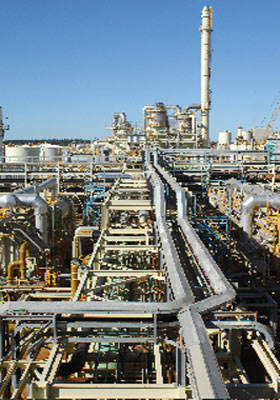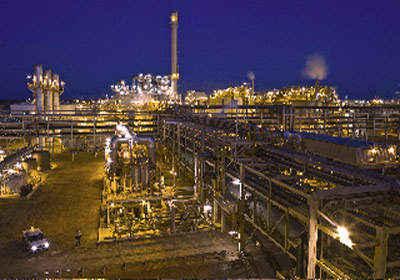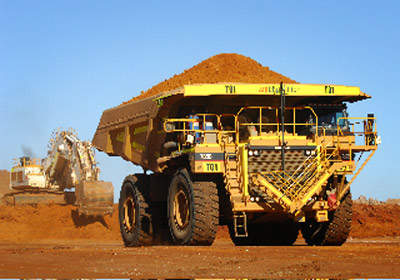The Ravensthorpe Nickel Operation (Australia) was sold by BHP Billiton to First Quantum Minerals Australia on 9 December 2009. Due to reduced profitability prospects, decreasing scope of the nickel market, and a gap between projected capital expenditure and production volumes, BHP Billiton decided to sell the operation for $340m.
Following this decision, the total workforce based at Perth-functional area of Ravensthorpe has been reduced to 800 employees by June 2009 – a loss of 1,800.
Following further review work, First Quantum plans to restart operations at the mine.
The Ravensthorpe integrated mine and primary processing facility is located 35km east of Ravensthorpe, in a band of remnant vegetation in an agricultural region next to the Fitzgerald River National Park about 570km south-east of Perth, Western Australia, and 155km west of Esperance.
The project involved open-pit mining from three nickel deposits, and a hydrometallurgical process plant to produce up to 50,000t of contained nickel and 1,400t of contained cobalt per annum in a mixed hydroxide intermediate product (MHP) for further processing at BHP Billiton’s Yabulu Nickel Refinery in Queensland.
Ravensthorpe was a laterite nickel project which, because of the ores’ low grade, and expensive and intensive processing requirements, has caused BHP some headaches.
The project was originally approved in March 2004 with a budget of $1,340m. But by November 2006, capital costs rose to $2.2bn. The company did not officially open the operation until 23 May 2008, although commissioning took place in December 2007 with first production of MHP achieved in October 2007; it was originally scheduled to start production in mid-2007.
Ravensthorpe geology
The Ravensthorpe region is underlain by basement rocks of the Albany-Fraser Orogen and the Yilgarn Craton, which constitute the bulk of the Western Australian land mass. These rocks consist of granite, gneiss and minor enclaves of sedimentary and volcanic rocks. At Bandalup Hill, lateritic nickel deposits up to 80m thick are developed over ultramafic rocks.
Mineralisation occurs in limonite (high iron, low magnesium and calcium, upper levels) and saprolite (low iron, high magnesium, deeper levels) ores in the three deposits – Halley’s, Hale-Bopp and Shoemaker-Levy
Reserves
The three ore bodies have a proven reserve of 125.3Mt at 0.73% nickel and 0.032% cobalt, and a probable reserve 137.9Mt at 0.57% nickel and 0.026% cobalt, giving a total of 263.3Mt at 0.65% Ni and 0.029% Co. The reserves ensured a project life of 21 years.
Mining of up to 13Mt a year started at the Halley’s deposit in December 2006 and is expected to continue for the first 11 years of operation.
Thereafter, the Shoemaker-Levy then Hale-Bopp deposits would have been mined and the ore from the Shoemaker-Levy deposit transported to the process plant via an overland conveyor.
Ore processing
The Ravensthorpe ore body is distinctive in that it has a high silica content, which enables the limonite ore to be upgraded to almost twice the mined grade through a beneficiation plant – a simple scrubbing and screening process to remove the barren, hard silica. The saprolite ore also upgrades but to a lesser extent.
Processing is a combination of pressure acid leach (PAL) and atmospheric leach (AL), called enhanced pressure acid leach (EPAL). The limonite is treated by PAL, while the saprolite is treated by AL using the PAL discharge and additional acid.
The company said that the process enabled better use of all ore types within the Ravensthorpe resource, and the recovery of an additional 15,000t a year of nickel.
The process downstream of the leaching circuit uses a Cawse flowsheet with partial neutralisation, followed by separation of the barren tailings from the nickel-bearing solution, further impurity removal and precipitation of the MHP. This is then transported to the Yabulu refinery via the port of Esperance, about 120km to the east, where it is processed into nickel.
Ravensthorpe is self contained and includes a sulphuric acid plant, which produces high-pressure superheated steam for leaching and other processing areas. Available steam is also used in three steam turbines to generate the site’s electrical power.
The project used seawater piped from the Southern Ocean and pumped to the site via a 46km pipeline system. The seawater was desalinated on site to produce fresh water for steam production while the waste brine stream was used in the beneficiation circuit.
Construction of the project was managed jointly by Hatch Associates and GRD Minproc.










